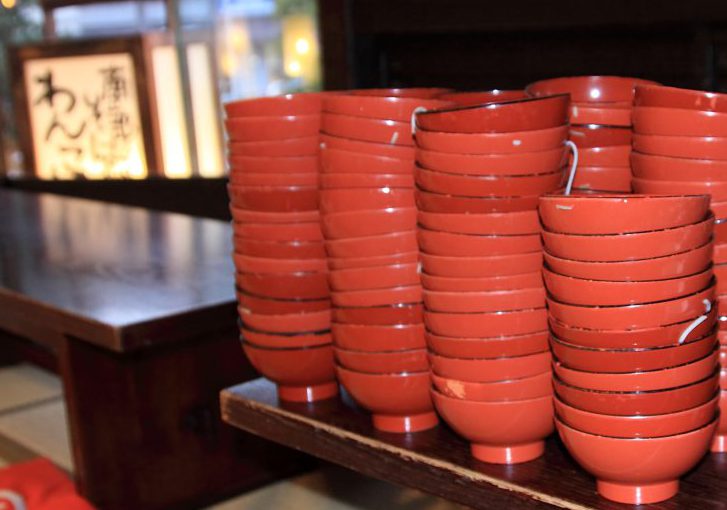Wanko soba – when one is never enough

What’s better than one bowl of noodles? How about 100?
Wanko soba is one of those idiosyncratic dishes with many origin stories but no matter how it started – all roads eventually led to one destination – the wanko soba challenge.
The challenge is simple – eat as many bowls of soba as you can within a certain timeframe without taking a break. The current record is 570.
The regional dish comes from Iwate Prefecture, which is bordered by the North Pacific Ocean on one side and mountains on the other. Iwate is part of the Tohoku region, the beautiful northern part of Honshu, the largest of Japan’s four main islands.
Wanko soba is a simple dish – it consists of a small serving of soba (buckwheat) noodles in a bowl with a shoyu (soy sauce) based broth.
It’s usually accompanied by toppings such as tempura, tuna, natto (fermented soybeans), negi (green onion) and squid but these are best left alone if you want to maximise stomach space for the challenge.
The word “wanko” means small wooden bowl and comes from the regional dialect of Iwate Prefecture.

There are a few stories about the origin of the dish but common consensus is that the dish dates back to the Edo Period, roughly 400 years ago, and originated in the city of Hanamaki.
The story goes that Nanbu Toshinao, the lord of the Nanbu clan, stopped over at Hanamaki Castle. He was served a small amount of soba in a bowl and loved it so much he asked for more and more bowls.
He probably didn’t get close to 570 bowls but he may have set in motion one of the most famous eating competitions in Japan.
Today, the people of Hanamaki and the prefectural capital Morioka pride themselves on their wanko soba tradition with it representing a deeper understanding of hospitality, the concept of “otebachi” being part of this. Otebachi means that as soon as a guest finishes a bowl, the bowl will be replaced in an instant with fresh soba.
So for those who aren’t up for the food eating competitions, you can sit back and enjoy the meal and local hospitality. Let your friends gorge on the noodles while you enjoy this rustic meal, the way it was meant to be.
Learn more:
https://visitiwate.com/article/4866
This article is published in partnership with the Japan National Tourism Organization.
https://www.japan.travel/au
